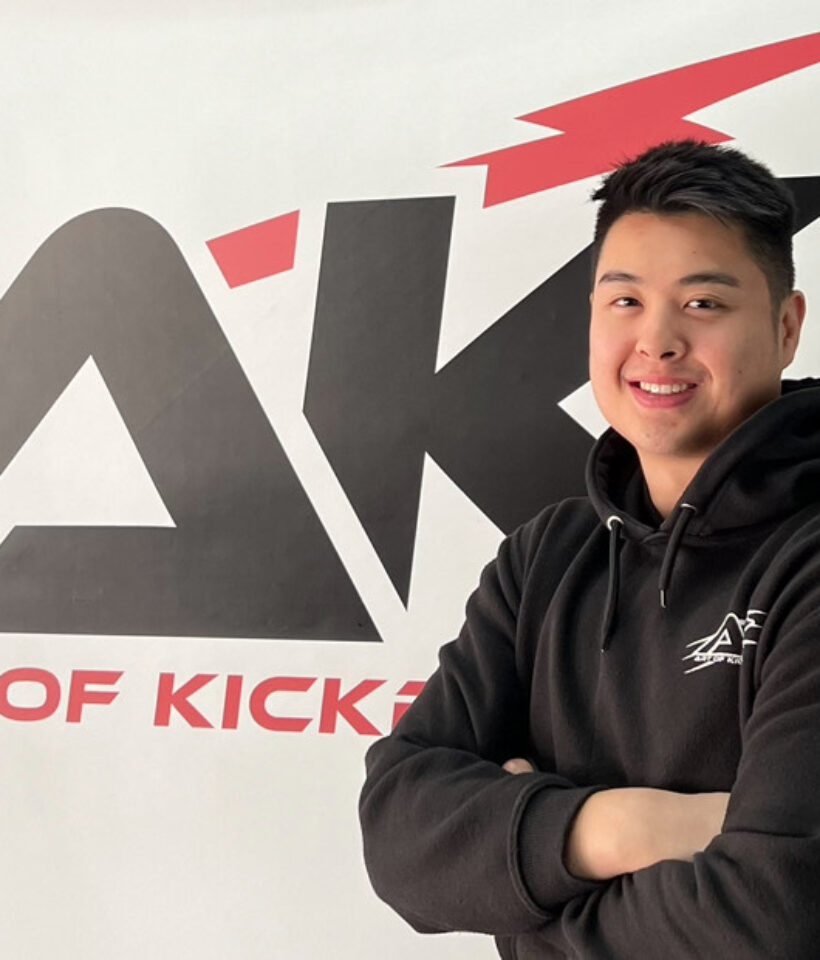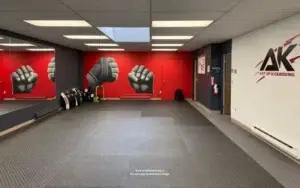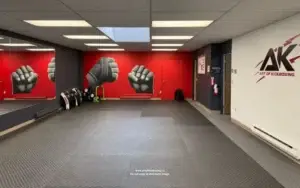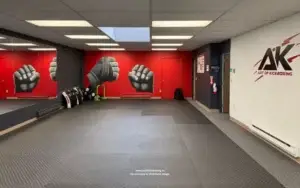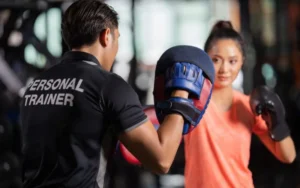Mixed martial arts starts from training and mastering a single combat sport or martial art, such as kickboxing or wrestling, and then spreading out your skills into other martial arts such as jiu-jitsu or judo. Beginning your MMA training demands serious planning, time, and commitment, regardless of your goals—be they to become the next Conor McGregor or just to get better at self-defence.
Mixed Martial Arts (MMA) is often celebrated as the fastest-growing sport globally, blending techniques from various combat sports. Art of Kickboxing provides five-fast mixed martial arts tips for beginners looking to train effectively.
Mixed Martial Arts Tips: 5 for Beginner Training
MMA provides an innovative strategy to build both physical and mental strength, by combining several different martial arts disciplines. Starting your Mixed Martial Arts (MMA) training journey may be both exhilarating and rewarding, depending on your reasons for being interested in the sport: fitness, self-defence, or the rush of competition.
The five suggestions that follow are intended to help novices get the most out of their initial training sessions while providing a well-rounded and secure introduction to this demanding sport. These fundamental principles can help you become skilled and confident in the MMA arena, from selecting the correct disciplines to learning recuperation procedures.
Let’s examine some pointers to help you get the most out of your training program.
RELATED: Women’s Kickboxing in Metro Vancouver: Intro for Beginners
Tip 1: Decide to Master No More Than 2-3 Martial Arts
MMA encompasses multiple fighting disciplines, but spreading yourself too thin can hinder your progress. As a beginner, focus on learning two or three combat arts to build a solid foundation and actually master your combat skills. Learning too many without getting enough experience in one, makes you the jack of all trades, but master of none.
Key styles that complement each other, like Brazilian Jiu-Jitsu for ground fighting and Muay Thai for striking, provide a balanced skill set. This focused approach helps in mastering fundamental techniques and applying them effectively in amateur fights or even in a street fight scenario.
Tip 2: Train in One Martial Art at a Time
While you may be eager to dive into several styles at once, mastering one combat style before moving on to another ensures that you develop proficiency and deep understanding. There’s two main kinds of martial arts when it comes to MMA, striking and grappling.
- Striking is usually an on your feet, using forceful direct attacks to injury the opponent.
- Grappling is all about your gripping and grabbing skills, driving your opponent to the ground in order to incapacitate them.
Starting with Brazilian Jiu-Jitsu allows you to gain confidence in your ground game—a very important aspect of MMA. As you progress, integrating striking disciplines like boxing or Muay Thai can expand your versatility. Training sessions dedicated to one discipline at a time enable you to concentrate on specific skills such as takedown techniques or defence techniques without distraction.
RELATED: Martial Arts Classes or Gym: Which to Join?
Tip 3: Choose a Gym or Class with a Safe Sparring Environment
Sparring is an integral part of martial arts training, providing a real-time opportunity to test and refine your skills. When selecting a gym, prioritize environments that emphasize safety and proper technique over mere toughness or endurance. Without proper safety measures or competent referees, sparring in martial arts can be very dangerous.
A good training facility will ensure that all participants wear appropriate gear like shin guards and that training partners are matched based on skill level and weight class. This consideration helps minimize injuries and promotes a positive learning experience, which is essential for long-term development in combat sports.
Tip 4: Work on Cardio and Conditioning Training
MMA demands high levels of stamina and physical strength, making cardio and conditioning training the most important kind of training. Many combat sports or martial arts classes, such as kickboxing classes incorporate MMA-style cardio conditioning. Those who don’t have good cardio training will exhaust quick, and from there the opponent usually wins the match.
Incorporate routines like high-intensity interval training (HIIT) or circuit training to enhance your cardiovascular fitness. These exercises help build endurance, allowing you to maintain high energy levels during training sessions and fights. Additionally, focusing on core exercises strengthens your entire body, providing better body control and power in your movements—critical elements in both striking and grappling situations.
RELATED: Muay Thai vs Kickboxing Differences: Which is Better?
Tip 5: Proper Mixed Martial Arts Post-Training Recovery
Recovery is just as important as active training in MMA. After intense physical exertion, giving your body time to recover with adequate rest and proper nutrition is vital. Engage in activities like yoga or swimming on recovery days to keep active without overstraining your muscles.
Additionally, stay hydrated and consider nutritional supplements that aid muscle recovery and energy replenishment. Many older practitioners use omega-3 fish oil, krill oil, or turmeric for joint pain and inflammation after rolling in Jiu-Jitsu. Rose quartz or jade gemstone rollers for the face might help with facial injuries in MMA by reducing swelling and inflammation through their cooling effect and gentle massage. This attention to recovery prevents injuries and ensures that you are consistently ready for the physical demands of MMA training.
Start with Kickboxing Lessons in Richmond, Metro Vancouver
Entering the world of MMA can be exciting, but it takes a lot of dedication, time, and experience due to having to master more than one combat sport or martial art. By focusing on mastering a limited number of martial arts, taking one step at a time, training in a safe and supportive environment, maintaining robust physical conditioning, and prioritizing recovery, you set the stage for a successful and enjoyable training journey. Remember, every professional fighter started as a beginner, and consistent training, coupled with a passion for learning, paves the way to mastery in this dynamic and challenging sport.


